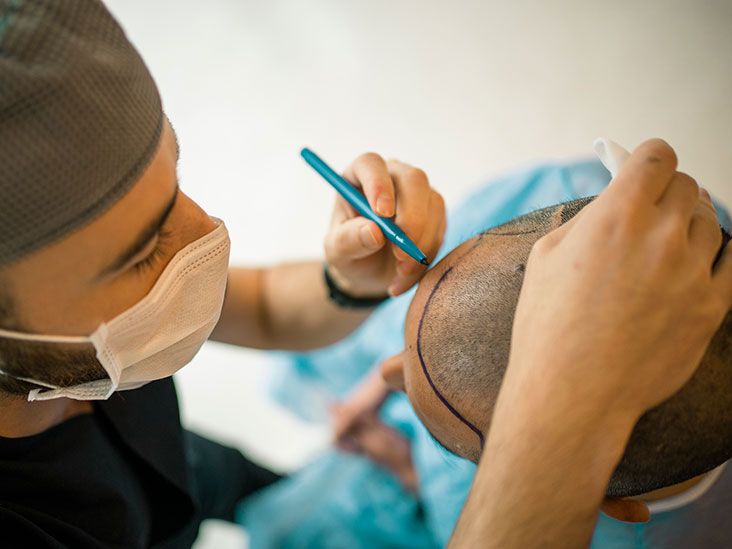For many individuals dealing with hair loss, one of the most pressing questions is, “How long do hair transplants last?” The idea of restoring natural hair permanently is incredibly appealing, but understanding the durability of results is essential before making any decisions. Hair Transplant(زراعة الشعر) are designed to be long-lasting, often offering a permanent solution, but their longevity can depend on several factors including the technique used, post-procedure care, and natural hair loss progression. Let’s explore what you can expect in the short and long term.
The Significance of Hair Transplant Treatment:
Hair plays a powerful role in shaping our appearance, and for many, hair loss can negatively impact confidence, social interactions, and emotional well-being. A hair transplant offers a transformative solution, moving healthy hair follicles from one part of the scalp to thinning or balding areas. The result is real, growing hair that looks and feels natural.
This treatment stands out among other hair loss solutions because of its ability to deliver permanent results using your own hair. Unlike temporary methods such as wigs or topical applications, a hair transplant offers long-term value and a restored sense of self-image. The importance of this procedure goes beyond just aesthetics—it helps people regain control over how they feel about themselves.
How Long Do Hair Transplants Last?
One of the greatest advantages of a hair transplant is its potential to last a lifetime. The transplanted hair follicles are usually taken from areas that are genetically resistant to hair loss, such as the back or sides of the scalp. Once transplanted, these follicles retain their resistance and continue to grow like normal hair.
Here's a general timeline of what to expect:
- First 1–3 Months: Transplanted hair may shed (a normal part of healing).
- Months 4–6: New hair begins to grow, often thin and fine at first.
- Months 6–12: Hair thickens and gains texture.
- After 12 Months: Full results are visible, with natural density and growth patterns.
Once the new hair has fully grown in, it typically continues to grow for years, if not a lifetime, depending on individual factors such as age, lifestyle, and progression of natural hair loss elsewhere on the scalp.
The Key Benefits of Long-Lasting Hair Transplants:
Hair transplants offer not only visual improvement but also long-term emotional benefits.
Permanent Results:
Once established, the transplanted hair is usually resistant to balding, making the outcome durable and long-lasting.
Natural Look and Feel:
Because your own hair is used, the results blend seamlessly with existing hair.
Low Maintenance:
Unlike wigs or synthetic hair solutions, transplanted hair requires no special care—just regular grooming.
Improved Confidence:
The psychological benefits of looking younger and feeling more self-assured can significantly enhance quality of life.
No Recurring Treatments:
Once the procedure is complete and recovery is over, no ongoing treatments are typically necessary for the transplanted area.
These lasting benefits make a hair transplant a compelling option for those seeking a more permanent solution to hair loss.
Risks and Considerations to Be Aware Of:
While Hair Transplant Treatment(علاج زراعة الشعر) are generally reliable, it's important to understand that they are not entirely immune to limitations.
Ongoing Natural Hair Loss:
While the transplanted hair may be permanent, your non-transplanted hair can still thin or fall out, possibly requiring future sessions.
Uneven Growth Over Time:
In some cases, hair growth might be irregular, especially if natural hair continues to recede in untreated areas.
Scarring:
Minor scarring may occur, especially with traditional methods, though this is usually hidden beneath hair.
Shock Loss:
Temporary shedding of both transplanted and native hair is common but typically regrows within months.
Awareness of these risks allows for more accurate expectations and better satisfaction with long-term results.
Frequently Asked Questions:
Does hair from a transplant fall out over time?
The transplanted hair may shed initially, but once regrown, it is generally permanent due to its genetic resistance to balding.
Will I need another hair transplant in the future?
If hair loss continues in other areas, a second procedure might be considered to maintain balance and density.
How do I care for my transplanted hair?
Basic hair care—washing, trimming, and styling—is usually all that’s required once healing is complete.
Is the procedure painful in the long run?
Discomfort is usually minimal and limited to the recovery phase; long-term pain is uncommon.
Can the results look unnatural over time?
Modern techniques focus on natural placement, and when properly done, results remain realistic even years later.
Conclusion:
So, how long do hair transplants last? In most cases, they offer a permanent solution, with results that can endure a lifetime. Transplanted hair continues to grow naturally, behaves like your own, and can be styled or groomed without concern. While surrounding hair may continue to thin with age, the transplanted follicles are typically resistant to further loss. With proper planning and realistic expectations, a hair transplant can provide a lasting transformation, helping you feel confident and comfortable in your appearance for years to come.

